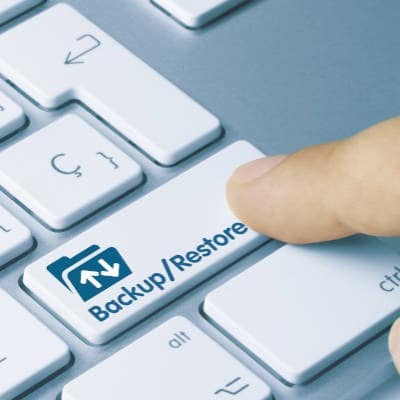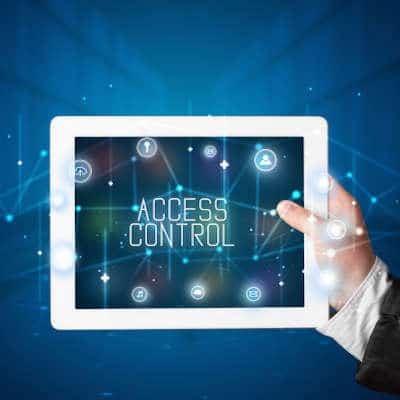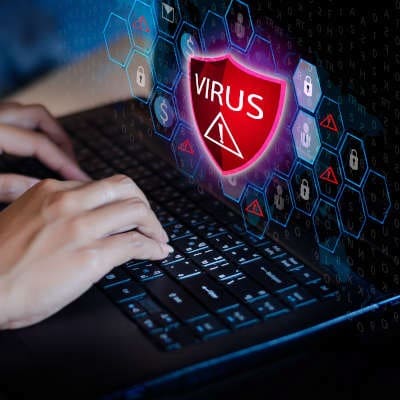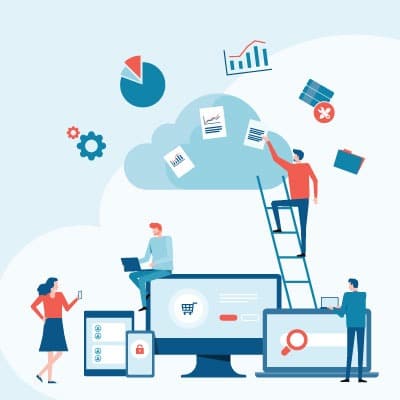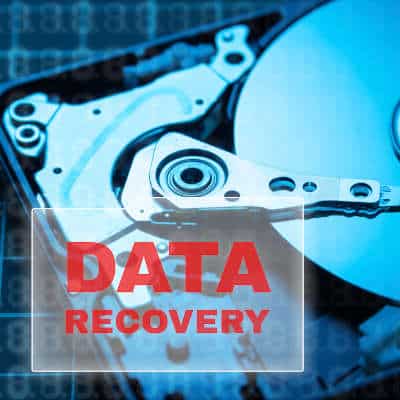First of all, it’s important not to panic. Many organizations have been offering work-from-home perks for years. Not only is it entirely possible to keep business running, but many businesses see a boost in productivity. A two-year Stanford study shows that in general, remote workers are as productive, if not more so, than those confined to an office. Double Down on Good Communication Habits Although we’re all supposed to be social-distancing ourselves to prevent our friends and loved ones from spreading and catching COVID-19, communication is still incredibly important. Managers and supervisors need to be kept in the loop from both sides: team members need to report up to them, and company updates need to be communicated downstream. Regularly scheduled department meetings and staff meetings should still all happen. Department heads should check in with their teams regularly. Of course, business owners may get the intuition to check to make sure their staff is “on seat” and working, but if possible it’s better to show you trust your employees, and address problems with specific staff, have managers focus on them instead of the entire workforce as a whole. Fortunately, there are plenty of applications available to make communication easier. These range from instant messaging tools like Google Hangouts and Slack, to video conferencing solutions like Zoom, Webex, and GoToMeeting. For businesses that utilize Microsoft 365, Microsoft Teams is a solution included with each license. G-Suite users can use Google Hangouts for group chatting and internal conferencing. SRS Networks can help you set any of these up with your staff. One final thought: remember that many of your employees may be feeling pretty isolated, and even lonely. Keeping that structure with regular staff and department meetings can help keep people feeling connected. Staff can Make and Receive Work Calls from Home Beyond communicating internally, you’ll likely want your workforce managing the phones even from home. Fortunately, with many VoIP systems, this is relatively easy to do. Every VoIP solution is going to vary a little, but most offer the ability to make and receive business calls from any computer, laptop, or smartphone. It doesn’t require additional hardware (other than perhaps a good headset) and it gives your staff the ability to make calls from their work number instead of a personal one. They still get the same capabilities they would at the office: call recording, forwarding, voice mail, conferencing, and more. The key is they can handle it all from their personal device. Of course, traditional desktop phones and handsets are available too. On top of that, VoIP can often save a little money when compared to traditional phone systems. If your business isn’t using VoIP, it’s time to consider making the switch. IT Security is More Important Than Ever Let’s say you have 25 users and 25 workstations. You control those workstations; you have them monitored and maintained, and you have network policies pushed to them to prevent things from getting out of control. If those 25 users start working from home, suddenly you are contending with at least 25 endpoints that you don’t control. There are a lot of variables at play here. Who uses the computer at home? Are kids on it? Is it the family computer? What kind of security does it have? It’s impossible to say, […]
It makes sense that any kind of redundancy would be frowned upon, given that business operations today have become so focused on efficiency. The difference is that the redundancy that we are discussing here has an intended purpose. Let’s examine this intentional redundancy in action with the 3-2-1 Rule of data backup. The 3-2-1 Rule This “rule” is pretty generally accepted amongst IT professionals. It sums up to the following: 3. Three copies of your data should exist 2. Two of these copies are backups 1. One of these backup copies should be located offsite But why two backup copies? Wouldn’t one of them be mostly redundant? It would, and that’s the point. Consider the possibility that your on-site backup could be lost in the same disaster that destroys your original copy. Your backup isn’t going to be of any help then. What if you found out that your offsite data center suffered a disaster, and so your backup is gone, just as a minor data issue takes place in-house? Your second backup is just that, a backup to your backup. Plan C, when Plan B doesn’t work out. A Timely Message It isn’t hard to see why this kind of reliability is valuable to a business, considering what has been happening in the past few weeks with the COVID-19 outbreak. Businesses everywhere are either closing up shop or shifting to remote operations for the time being, and as this has been going on, business locations are being targeted. Theft and even vandalism can be very real causes of data loss, which means that properly backing up your data is a must. This situation also highlights one of the reasons that we really push the cloud as the best option for your backups. Not only is your data protected in the cloud, it is also accessible to your team, allowing them to work from home if need be until it is safe to return to normal working conditions. Of course, nobody should hope to have this happen, but not being prepared for it is just foolish. Again, we recommend the 3-2-1 Rule, as it practically guarantees that you aren’t without your data. If you need help setting up your backup solution, we can help with that, too. Call SRS Networks today to learn more about how working with us can ensure that your IT is reliably available to you when you need it. Reach out at (831) 758-3636.
What is BlueKeep? The Bluekeep vulnerability is a strain of malware that was discovered in May 2019, and was patched soon thereafter. Healthcare providers wanted to ensure that BlueKeep wasn’t anything like the EternalBlue situation just a short time ago. EternalBlue was the exploit hackers used that allowed the WannaCry ransomware attack to have such a lasting impact on the industry. Unfortunately, many health maintenance organizations didn’t apply the necessary patches; and with the three operating systems (Windows 7, Windows Server 2008, and Windows Server 2008 R2) that the BlueKeep vulnerability affects already lacking support, the situation is definitely problematic. This is more true today as the COVID-19 virus continues to spread rapidly, putting unprecedented pressure on these hospitals and other healthcare organizations. Even today, over 20 percent of all BlueKeep-vulnerable devices remain unpatched and nearly 45 percent of all connected medical devices remain vulnerable to attack. That includes some very important machines such as x-rays, anesthesia machines, and care-driven technologies vulnerable for an attack. Is your practice up-to-date? If you would like our professional IT experts to do a thorough assessment of all of your practice’s technology to see if your systems are patched and up-to-date, call us today at (831) 758-3636.
When it comes to the permissions that a business’ assorted users need to use inavigate ts network, most businesses turn to Microsoft Active Directory to help manage them. Simply put, Active Directory allows you to review and distribute access to the assorted resources found on your network and other user capabilities. However, whether you use Active Directory or another solution, the following practices and policies apply: Keep Permissions in Check One of the most crucial parts of your data security is the process of restricting access to your data (and your business as a whole) to only those who need it. For most businesses, there is no reason for anyone–especially a non-employee–to enter the premises in the middle of the night. Furthermore, different employees shouldnt have the same access as each other, simply because they have different access needs. Will one of your newly-hired employees need the same access as you do? Almost certainly not, so there is no reason to allow such a thing to ever take place. Make sure your network permissions are reviewed and corrected periodically. Establish Role-Based Permissions On the subject of restricting permissions, a utilitarian policy is generally best to follow. Will one of your users need access to a given resource in order to successfully do their job? If not, don’t give them that access. By assigning these permissions based on work roles, you can granularly give your team members the access they need, without unnecessarily exposing your data to individual employees who may not need a certain asset. Optimize and Supplement Password Policies A strong password policy is an absolute must when it comes to your data security. Not only do these passwords need to be strong, they should need to be updated frequently. This will help prevent users from sharing their passwords, or reusing old ones. Because there are so many passwords that everyone is expected to remember nowadays, the strength of these passwords has suffered. Combining this with the fact that cybercriminals now have stronger tools than ever to crack passwords, the username/password combination is often no longer sufficiently secure. To remedy this, implement two-factor authentication, which makes a cybercriminal’s job that much harder. Need help with these steps, or any other part of your business’ technology? We can help! Give SRS Networks a call at (831) 758-3636 to speak to one of our IT professionals!
First, let’s look at the concept of gamification a little more closely. What is Workplace Gamification? In a nutshell, gamification is the concept of taking elements of games (the parts that make them fun) and introducing them into business processes with the intention of boosting engagement and productivity. For instance, many applications and computer software exist today that appeal to young children with bright colors and animated characters guiding them along a storyline. However, these applications actually encourage them to learn by only allowing progress through their successful completion of activities based upon math or literature. As a result, learning is made “fun” by associating it with an enjoyable activity, which is a natural motivator. This source of motivation is just as effective among adults, and so it has been employed in more and more business applications. How Can the Workplace Be Gamified? Regardless of how long an employee has been at your company, their experience has the potential to be boosted in some way or another, largely thanks to how simple it can be to gamify a business process. For instance: Those in training can be introduced to assorted workplace requirements and procedures via gamified learning portals. Established employees can be incentivized by gamified rewards and recognition to accomplish more and abide by proper procedures. Ongoing training can be made far more efficient and less time-consuming through a gamified structure. Your employees can receive feedback and correction in real time, helping them to identify their mistakes and adjust their actions. Furthermore, the engagement that gamification can bring can be directed to the benefit of your employees and their overall well-being. Instead of gamifying their tasks during the day, some companies have elected to gamify their employees’ health and well-being. Sedentary jobs are notorious for their adverse effects upon health, so gamified challenges are used in conjunction with fitness trackers to try to promote employees to be active whenever possible. As healthier habits are established, absenteeism drops, as healthier employees are less likely to require sick days. Finally, and perhaps most obviously, gamification can be used as a team-building tool. A prime example is in the explosion of company-based eSports teams, where coworkers compete in a video game. This has worked both with individual employees pitted against one another or with coworkers playing alongside each other as a group against another group of players. While teamwork and communication are developed, the engagement this can bring to a workforce really shines… even more so when the organization of it is left to the employees, and not management. While we aren’t known for our involvement in the gaming industry, SRS Networks can help make your team’s time more productive in other ways! To learn about our IT solutions, give us a call at (831) 758-3636!
Prepare Proactively Just as with any move, strategizing the day that you are supposed to shift to your new location isn’t an option. You need to take everything into account ahead of time, and adapt your plan as new information becomes available and circumstances change. You should also keep in mind that the moving process is going to be a lengthy one, and that it will require investments of both time and capital. Therefore, you need to prepare yourself and your organization for all of these considerations ahead of time. Deciding On A Space Of course, if you plan to move, you need someplace to move to. This means that you have to make quite a few decisions concerning where your new space should be and how it will be financed. You have the option to rent out space in a business park or purchase a new building for yourself. You could also lease space, if you don’t want to purchase property but plan to stay in the same area for some time. Your budget and your business plan will dictate which option is the best for you. Understanding Any Rules If you do elect to rent or lease space, you also need to know what your host building requires of its tenants as they move in. You may only be allowed to move in after normal business hours, or need to request access to a service elevator. Understanding these rules will allow you to better plan for your move. Determining The Floor Plan Once you have decided upon a space, you will have to decide how your employees and their resources will be distributed in your new office. How will your workspace be laid out? Will you use an open plan that encourages collaboration, a closed plan that provides increased privacy, or a modular plan that serves as a hybrid of the two? Do you need private conference rooms and other meeting areas? What about a break room, a server room? Your particular industry could easily impact these needs and your priorities as well. Determining Your ISP Nowadays, Internet service is essential for a business’ operations, so you need to make sure that you sign up for a service plan that fits your needs–both current, and projected. Investigate your available providers and compare what they have to offer to get your business the best deal. Planning Your IT and Office Communication Systems As soon as you have established when your move is to take place, you need to begin preparing your organization’s IT for your move. In doing so, you should keep a comprehensive inventory of your hardware and software, and what the plan for each component is to be. This will cover all workstations, storage solutions, and communication tools, like VoIP solutions. Moving into a new space is a big process, so why not let someone else take care of a few parts of it? SRS Networks can help you with your move where your technology is concerned. To learn more about our many IT services, give us a call at (831) 758-3636.
Notifications? Like My Phone? Sort of. Similar to Android and iOS devices, Windows has notifications. While many of these notifications are simply based on the operating system itself – new features, required updates, etc., applications like Outlook can use the notifications feature to show you when new messages come in. What is the Action Center? The Action Center is Microsoft’s revamped version of the notification center. Rather than allowing missed notifications to expire, the Action Center preserves them for review later on. When a user has such notifications to review, the small speech box in the menu bar that provides access to the Action Center will turn white and prove a number of notifications that await review. Once opened, you will see your notifications at the top, along with a brief list of quick-access settings that expands to include: All settings Network Connect Project Screen snip Battery saver VPN Bluetooth Night light Mobile hotspot Wi-Fi Focus assist Location Airplane mode Nearby sharing Tablet mode As you may have noticed, a few of these options are clearly devised to be used with a touchscreen-based mobile device, such as the available “tablet mode.” In the Settings menu, you can also customize this list to omit entries you have no use for. So, What Do You Think? Have you found the Action Center to be useful in the past? Share your thoughts about it in the comments!
How are Cybercriminals Using Coronavirus? “You can sit in a room and create anything you want on a laptop. That’s why the real con men are gone.”– Frank Abagnale Reformed con man and FBI consultant Frank Abagnale is right, as the cybercrimes shaped around the coronavirus have proven. Due to the deep anxiety and trepidation that the media coverage of COVID-19 has encouraged, cybercriminals have been handed an opportunity to take advantage of the panicked populace through phishing attempts… an opportunity they have embraced since the end of January. These themed attacks have been directed toward a variety of targets. For example: Healthcare providers have been targeted by phishing attacks that deliver keylogging malware, meant to look like emails from local hospitals or the World Health Organization. “Informational” emails referencing coronavirus have enabled hackers to introduce ransomware to the populace. Members of the supply chain have seen coronavirus emails that install information-extracting malware through malicious Microsoft Word documents. Of course, this kind of activity has been going on for far longer than the Internet has been around… it’s just that the Internet makes these attacks much more efficient and effective. How this Complicates Things Unfortunately, the latest application of these attacks have proven effective. Much of this is likely due to the fact that they are leveraging a very visible and nerve-wracking event, which helps to boost the interest of a target. This same tactic is the reason that so many phishing attacks are launched right around tax time, and why fraudulent messages were shared via SMS claiming that the recipients needed to register for the draft… for a fee. Whatever the approach, the tactics have remained the same: scare the recipient enough that they don’t consider that the message may be fraudulent, and give them a perceived “out” if they turn over their information. Adding to the complexity, the situation with COVID-19 is just different enough from other events that cybercriminals typically take advantage of, for it to be uniquely dangerous. For instance, many of the other disasters that a cybercriminal will use to their advantage are over in a relatively short time frame. In comparison, COVID-19 has already spent weeks dominating the headlines, with no way to tell how many more weeks (or months) are yet to come. In addition to this, coronavirus is largely unprecedented, unlike the foundation of many other phishing attacks (such as major sporting events and the like). This means that there is no real resource that is known to be trusted for people to turn to. For weather events, the National Weather Service and FEMA fill that role… no such resource is as commonly trusted for coronavirus. What Can Be Done In most cases, resisting these efforts will require a combination of basic cybersecurity measures and–perhaps more critically–user awareness and education. While your protections will ideally block the majority of phishing attacks and malicious messages, you need to be sure that your employees are aware of how such attacks should be handled: Train effectively – Rather than taking up half of one day on a dull and repetitive training seminar, split your training efforts into shorter pieces, focusing on assorted aspects of the threat at hand. Give your team the knowledge they need to recognize phishing attacks and understand the importance of mitigating […]
Let’s pretend that all data is represented by books in a library, which itself represents the database. Now, consider what a library would be like without the Dewey Decimal System. All the books would be stuffed into the shelves haphazardly, no rhyme or reason to them at all. It would be practically impossible to locate any of the information you were trying to find. The Dewey Decimal system serves the same purpose in the library as the database management system (DBMS) does for your database. What Does the DBMS Actually Do? True to its name, the database management system enables you to manage your database. More specifically, it assists you in keeping your data organized and secure, while also helping you keep track of the activity taking place in your database. One of the biggest advantages of a DBMS is the fact that it gives you so much control over your data, while also adding convenience. For instance: A DBMS allows you to restrict access to data that an end user has. Users have a simpler time finding the data they need. It eliminates the need to restructure data to use different programs. Administration procedures can be unified. A DBMS makes data processing more economical. Data inconsistencies between file systems are eliminated. A DBMS allows for simultaneous data access between multiple users. In short, a database management system makes your users’ jobs simpler to carry out, without sacrificing the security of, or control over, your data. SRS Networks can help you implement the organizational tools you need to remain productive. To discuss your needs with one of our professionals, give us a call at (831) 758-3636.
Here are some of the situations that businesses can benefit from proper data recovery maintenance: “…Oops.” At the end of the day, the most prolific threat to your data is your staff, the people you’ve hired to put all that data to use, including the person who looks back when you look in a mirror. I know, what a plot twist. However, it doesn’t make it any less true. Human error is one of the most common reasons that a company experiences data loss on any scale, mainly because there are so many ways for someone to make a mistake. Maybe someone deletes something accidentally, or takes the only copy of something offsite only for it to be lost or damaged. Therefore, it is crucial that you educate your users on proper practices for handling data, in addition to maintaining a comprehensive backup of your data to draw from if the need should arise. “In today’s weather…” Natural disasters can certainly live up to their name where your business’ data is concerned. Regardless of what the forecast says, your on-site infrastructure and any data it holds can be put at risk if a storm is severe enough. Taking this into consideration, any good provider will make sure that your data isn’t only saved in one location. Look at it this way… what good is a data backup, if that backup is wiped out by the same disaster that made it necessary in the first place? This is precisely why we always recommend that at least one copy of your data is preserved safely off-site. “Wait, my computer isn’t working right…” There are plenty of ways that an issue with a device itself can lead to data loss. Viruses can infect critical systems and take up the resources you need to be productive (and to save your data), drives can fail at the worst times, and the data stored on your system can be corrupted. If this is the case, keeping a backup can help save data that would likely have been lost without the backup. Finally, many small businesses assume that their size protects them from the interest of hackers. Unfortunately, they assume wrong. With many attacks now automated, cybercrime has become far easier to perpetrate. Threats like ransomware and other attack vectors can often require businesses to wipe their infrastructure to remove the infection. In these cases, a backup can prevent these actions from being a “mutually assured destruction” kind of strategy. Data recovery comes in handy in situations of any size and importance. SRS Networks can help you implement the solutions necessary for you to maintain a proper data recovery strategy. Learn more by giving us a call at (831) 758-3636.
- 1
- 2


